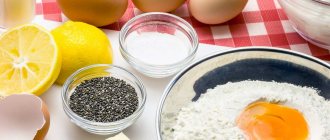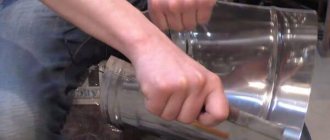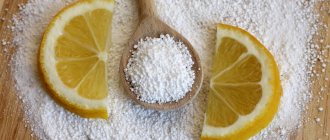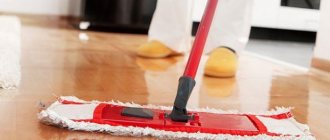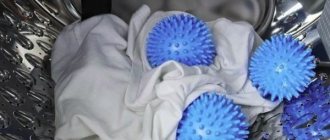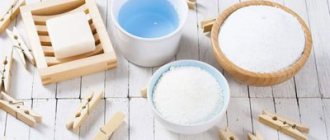Red traces of rust will not be a problem if you approach the issue of removing them in a timely and competent manner.
There are a sufficient number of folk and professional remedies, among which one can highlight one that is most effective for removing rust and safe for human health - citric acid.
This is a tool accessible to everyone that allows you to quickly get rid of rust stains from almost any surface.
Step-by-step instructions for making a rust converter with your own hands
Products called “Rust Converter” help solve the problem of corrosion of metal products.
Today there is a wide range of such chemicals on sale. However, the issue of making anti-rust products on their own is of interest to many.
Having decided to use a homemade converter, you must follow the recipe and technology for its use. At the same time, it is worth remembering all the pros and cons of such a product, as well as precautions when using it.
We'll tell you how to make a rust converter with your own hands at home in this article.
Vinegar and bleach solution
- Mix one part vinegar with two parts bleach in a container.
- We place the metal in the container so that it is completely immersed. We wait about half an hour. After this period, rust will appear on the surface.
- Wipe the material with a rag.
- Until the item is completely dry, you should avoid direct contact with it to avoid damaging your skin with chlorine.
- We fix the rust with a primer. The easiest way is to apply the primer in an aerosol can.
Using this product, you can effectively clean rust from white items.
Can it be done at home?
The purpose of any rust converter is to convert iron oxides into inert compounds that form a hydrophobic film on the metal surface.
In order to achieve this goal, manufacturers select a specific chemical composition. Each company has its own secret nuances, which it tries not to disclose , so as not to provoke the creation of fakes.
In addition, the converter may include:
- tannins (convert iron oxides into neutral tannate complexes);
- zinc compounds (after reaction with phosphoric acid forms a protective layer);
- corrosion inhibitors (form an additional film, slowing down the corrosion process).
At home, it is easy to find analogues of the main active ingredients and prepare a simple but effective converter. It is prepared from a smaller number of components by conventional mixing in a container.
How to prevent re-corrosion
The return of rust can only be avoided if the surface has been thoroughly cleaned beforehand. After this procedure, the product must be thoroughly dried and covered with a protective layer. Typically, this involves immersing objects in molten metal or electroplating them in a suitable bath.
The following substances protect well from rust:
- Zinc . One of the best options. Galvanized iron is often referred to as galvanized iron. Cold electrolytic galvanizing is the most effective. If the integrity of the protective layer is damaged, the rusting of the iron occurs very quickly, since in this case a galvanic crust and oxygen are formed on the metal.
- Tin . It protects well, but only if the iron is not exposed anywhere.
- Lead . Effectively protects against hydrochloric and sulfuric acid. Lead-coated sheets are used to create roofs for chemical and gas plants.
- Copper and nickel . They protect only with a significant layer thickness.
Even despite the protective coating, any metal objects sooner or later begin to rust. How quickly this happens depends on operating conditions. To ensure that they always maintain their original appearance, proper care is necessary.
Metal surfaces should be cleaned regularly, but frequent use of strong acids or alkalis should be avoided.
Citric acid will serve as a good prophylactic agent. A solution based on it can be used to wipe many surfaces, including tiles, enamel accessories, plumbing fixtures, taps and mixers, hoses and pipes. In cases where abrasive products are contraindicated, a better composition than citric acid cannot be found. In addition, it eliminates unpleasant odors.
Removing rust with citric acid will not damage the surface and it will remain in its original form.
Pros and cons of a homemade product
The anti-rust product, made by yourself, has a number of advantages. However, it cannot completely replace professional converters. Due to the existing disadvantages, many users prefer ready-made store-bought chemicals. For an objective assessment, it is necessary to consider both the pros and cons.
Homemade composition is valued for the fact that it:
It is not toxic to humans, as it consists of harmless substances.- Does not require very complex and time-consuming manufacturing technology.
- Has simple and clear instructions for use.
- Helps achieve rust removal and coating protection.
- It is much cheaper than branded analogues.
The disadvantages of a homemade converter make its use limited and reduce its popularity among motorists, housewives and production workers.
The weak points of the homemade corrosion modifier are:
- The need to find a convenient container and method of application.
- Can only be used with a thin layer of rust.
- Lower efficiency compared to special means.
- The need for mandatory coating of the product with paint or varnish.
Lemon and salt
Method: Sprinkle a generous layer of salt over the rusted area, cut a lemon (or lime) in half and squeeze the juice over the salt. Let the mixture sit, then wipe off the rust. If the rust remains, repeat the procedure and let the salt and juice sit for another hour or two until the rust is completely gone. Rinse, then dry.
Pros: Minimal abrasive process, uses ingredients you likely already have at home.
Cons: If you're cleaning rust from a kitchen knife, the process can be tricky and you might cut yourself. Be sure to wear protective gloves or work on a level surface to reduce the risk of accidents.
How to make, what is included?
Any converter must contain two main substances that react and form a protective film on the metal surface.
The step-by-step algorithm for manufacturing a home converter is as follows:
add 1.3-1.5 liters of citric acid to 1 liter of water;- stir the solution to distribute the acid evenly;
- add 15 g of baking soda to the lemon liquid, mix;
- wait for the end of the chemical reaction (this is about 40 minutes);
- pour the converter into a convenient-to-use bottle.
Citric acid can be replaced in the recipe with oxalic acid. The technology for preparing anti-rust with this organic acid does not change.
other methods
- Destruction of the protective coating. Metal structures are coated with special paint to protect them from environmental influences. Gradually it peels off and disappears from the surface. In the exposed areas, rust spots immediately appear and spread.
- Lack of anti-corrosion treatment. If structures and parts are not treated in a timely manner, the problem appears quickly, especially when in contact with moisture.
- Unnoticeable scratches, cracks and chips can also cause corrosion.
- Interaction of metals and alloys with dissimilar compositions and large amounts of carbon.
- Frequent changes in ambient temperature.
- Friction between iron products.
- Long exposure time to moisture.
- The presence of chemical elements, sodium or potassium chloride in a humid environment, in contact with iron.
- Fatty residues that appear on the coating of a product after contact with it.
- Presence of static or direct current in liquids or soil.
The acid will help clean white items or any fabrics. Immerse the item completely in the substance and leave for a while until the stain is completely gone. Add 2 tablespoons of ammonia to 1 liter of water and rinse the clothes in the resulting solution.
How to use?
Taking into account the general recommendations for the use of rust modifiers, the characteristics of the homemade product and its degree of activity, the instructions for use are as follows:
- The surface of the rusty metal is cleaned of dirt and dust, and if necessary, a detergent is used.
- If the corrosion layer is thick (more than 100 microns), remove it with sandpaper or a wire brush.
- Check the quality of cleaning by running your hand over the treated area. If the surface is rough, correct it with sandpaper.
- A cloth or rag is generously moistened in the prepared converter and applied to the stripping site.
- Allow the solution to react for a quarter of an hour without lifting the soaked cloth from the treatment area.
- After complete drying, a primer is applied to the surface and covered with paint or varnish.
Materials
- Powdered citric acid – sold at a grocery store or pharmacy if you don’t have it at home.
- A container where we will place steel objects for restoration.
- A scraper, like a spatula. Or a metal brush.
For security:
- Latex gloves.
- Protective glasses.
Benefits of using citric acid:
- Does not remove paint on surfaces.
- The reaction is completely controlled.
- Very affordable - almost always available in the kitchen.
- After use, you can pour it into the sink.
- Much cheaper than sandpaper and surface restorer.
Additional Tips
The accumulated experience of users and recommendations from specialists can help deal with rust on metal products more quickly and efficiently.
When using a homemade composition, it is worth remembering:
Depending on the degree of corrosion, it is advisable to use more powerful tools to remove rusty deposits: an angle grinder, sandblasting devices.- When using different methods of mechanical cleaning of rust, coarse-grained samples are first used, gradually moving to fine, fine-grained sandpaper.
- Before using the modifier, it must be shaken or stirred to create a uniform distribution of the active ingredients by volume.
- The container in which the ingredients are mixed must be glass, enamel, or ceramic. It is not recommended to use aluminum cookware.
- For convenient application of the product, you can use not only cloth napkins or rags, but also a spray bottle. It helps in cases where contact with the problem area is impossible.
- Each applied layer (anti-rust, primer) must be thoroughly dried. Otherwise, it is washed off by the subsequent layer and becomes ineffective.
You will find all the most important and useful information about rust converters in this section.
What other ways are there to combat corrosion?
There are various ways to combat corrosion.
Chemical
In this case, solvents on a natural or chemical basis are used, especially with a high concentration of alkali. The substance is applied in a thin layer to the area affected by corrosion. Next, wait for 30 minutes until the reaction passes. At the end, the treated surface is wiped dry.
Thermal
An oxy-acetylene torch will remove rust thermally.
This method requires the use of an oxy-acytene torch. It allows you to burn out the affected areas, but along with the paint.
Mechanical
Various devices are used to help remove plaque: brushes, scrapers, emery, and a grinder. These should be items with abrasive properties.
In more complex cases, when the corrosion layer is too thick, the following are used:
- orbital sander with abrasive wheels;
- sandblasting machine;
- electric drill with attachments;
- Bulgarian.
The latter tools require special skills and mandatory safety precautions.
The listed methods should only be used in well-ventilated areas.
Not all metal surfaces can be cleaned mechanically or thermally. To avoid mistakes and damage to the product, pay attention to the inscriptions or labels. If there are special symbols that prohibit machining, use a different method.
DIY rust converter
Surely every welder often wonders how to get rid of rust on metal once and for all. Working with welding is always associated with such a problem as corrosion of metal parts.
This problem is especially relevant when repairing cars, when you have to weld the body and perform other related work. The next step is painting. This is a critical stage and requires thorough preparation of the metal.
Today you can find many products on sale that will help remove rust and protect against it. First, the rust is removed until the metal shines, and then the surface is coated with a special converter. Such a converter can not only get rid of rust, but also protect the problem area from corrosion for some time.
Why do rust stains appear on concrete?
The nature of the appearance of rust stains on fabric is varied and sometimes unexpected. These include metal objects forgotten in the pockets of wet clothes, and low-quality fittings (buttons, zippers, rivets). But the most common phenomenon is prolonged or intense contact with objects susceptible to corrosion (for example, drying clothes on a metal wire that has at least slight signs of rust, a child drove down a slide, the surface of which has the same defects).
- baking soda mixed in equal proportions with citric acid or lemon juice, apply the well-heated mixture to the contaminated area, rinse thoroughly after ten minutes;
- liquid glycerin and chalk powder , mixed in equal proportions to the consistency of sour cream, apply to the stain and leave for about a day, then wash as usual;
- liquid glycerin with the addition of “FAIRY” type detergent , mix in equal volumes, apply to the stain, after a while rinse with plenty of water;
- alcohol vinegar diluted in hot water, dip a section of contaminated fabric into the solution for about 2 - 3 minutes, then rinse in water with the addition of a small amount of ammonia;
- ordinary table salt dissolved in table vinegar in equal proportions, apply to the contaminated area and leave for up to half an hour, then rinse with water and laundry soap.
In any case, before starting to remove stains, it is necessary to check the reaction of the fabric and dye to the drug used in an inconspicuous place to make sure that it will not cause even greater harm. Under no circumstances should you use products containing chlorine, which not only will not remove rust, but will also harm the fabric.
Rust converter composition
The composition of the factory rust converter is very complex. The cost of such a product is high. Therefore, many decide to make it themselves.
The main components that make up a rust converter are:
- Acid. This may be orthophosphoric or phosphoric acid;
- Water. But not ordinary, but distilled;
- Liquid zinc;
- Tannin;
- Pigments and biocides.
A commercial rust converter also includes other components. Here everything largely depends on what kind of rust converter it is. There are simple converters and so-called stabilizers that are capable of modifying rust into stable areas.
Cleaning the surface of parts
The first thing to do is to clean the surfaces from dirt and degrease. To do this, you can use a washing sponge, a dishwashing net and detergent.
We wash and clean the surfaces of parts and tools before restoring and removing rust.
DIY rust remover
The most affordable and easiest way to make a rust remover is to use orthophosphoric or phosphoric acid with water. The proportions of orthophosphoric acid and water are approximately 60 to 30. That is, 60% acid is mixed with 30% water. This product effectively removes rust from metal even in the most problematic areas.
However, such a component as orthophosphoric acid is not always on hand. And it’s not entirely safe to work with it in large quantities. Therefore, another recipe for a homemade rust remover was found. To make it you will need more affordable components.
To make a rust remover you will need:
- Liter of distilled water;
- One and a half liters of citric or oxalic acid;
- Fifteen grams of soda.
When making the product, you must adhere to the following procedure. First, the acid is diluted in water. Then soda is poured into the solution. A violent reaction will follow. After about 30 minutes, the homemade rust remover is ready for use.
It is necessary to wear rubber gloves when working with such a rust converter. Before applying to the problem area of the metal, it is best to clean the surface a little. Unfortunately, such a product is not able to overcome deep rust, but it will do an excellent job of pre-treating the surface against it.
Source
How to remove rust from iron using anti-corrosion agents
Removing unpleasant yellow plaque with chemicals is simple and reliable. What is the best way to remove rust from metal? Recently, retail chains have been introducing new lines of cutting-edge anti-corrosion drugs.
Such products require little effort: they are convenient, in small spray bottles. It is enough to apply the product according to the instructions and remove the rust. These products create a protective film on metal objects. However, this is a series of expensive products.
Rust converters are less expensive preparations, and the result will undoubtedly please you. From a series of the simplest and most affordable products, affordable toilet cleaning products will do. The fact is that the hydrochloric acid included in their composition is capable of qualitatively removing plaque from rust.
When working with this group of chemicals, it is important to follow the instructions and take precautions. To work you will need:
This entire arsenal of protective equipment will eliminate direct contact with aggressive chemicals.
With a competent approach, following simple tips and using available means, the problem of how to remove rust will be solved quickly, and you will forget about metal corrosion for a long time.
Subscribe and learn about the latest news from Kazakhstan, photos, videos and other exclusives.
Safe and effective remedy: citric acid for rust and rules for its use
Red traces of rust will not be a problem if you approach the issue of removing them in a timely and competent manner.
There are a sufficient number of folk and professional remedies, among which one can highlight one that is most effective for removing rust and safe for human health - citric acid.
This is a tool accessible to everyone that allows you to quickly get rid of rust stains from almost any surface.
Cleaning using folk remedies
If you don’t want to struggle with mechanical rust removal, you can use proven folk methods.
Acetic acid
It is better to use 70% acetic acid. Then the result will be more noticeable. If there is little rust, then sometimes regular 9% table vinegar is enough.
To remove corrosion and “time deposits” you need to follow a few simple steps:
- Pour the required amount of acetic acid into a deep container so that it completely covers the instrument.
Healthy! For this processing, it is best to use a plastic container that closes tightly with a lid.
- Place rusty products in a container and cover everything with a lid.
Screenshot of a video from the ARS Pro channel https://www.youtube.com/watch?v=0E6kY9JMggE
Tools should be left in this condition for several days (the duration of cleaning depends on the intensity of the contamination). After this you can open the lid. The peeling rust will be clearly visible underneath.
Will lemon juice help against corrosion?
The product of the corrosion process, rust, gradually penetrates the metal structure, destroying it.
Not only can you remove red stains, but you can also temporarily stop the oxidation process by cleaning with citric acid. It interacts with the formed iron oxides and neutralizes oxidation reactions.
"Limonnka" is an effective means of removing rust stains from:
- metal,
- glass,
- ceramic surfaces,
- clothes.
Most often, an acidic solution is used in cleaning:
- car body,
- plumbing in the house,
- old coins.
The only point worth remembering when choosing citric acid to remove rust stains: an acidic solution is effective only if used in a timely manner (as soon as the stain appears).
Heat treatment
Heat breaks down rust and is easy to remove with regular cleaning. Therefore, to combat the scourge, you can use the following tricks:
- if possible, pour boiling water over the object, wait for some time (until it cools down a little) and remove the loose layer;
- You can heat the device over a gas burner, gradually removing the easily removable deposit. To make the process faster, first apply hydrogen peroxide to the part;
- For those who have a steamer or steam mop at home, it's even easier: treat the rusty area with an intense stream of steam and scrub.
Pros and cons of cleaning
In comparison with other methods and means of rust removal, citric acid has a number of positive properties:
- Maximum availability of the product (citric acid is available in every kitchen; if necessary, you can simply buy it at the grocery store).
- After cleaning is completed, the acidic solution can be disposed of down the drain (thus providing additional cleaning of the pipes).
- Unlike professional chemical rust removers, the cost of a bag of citric acid is low and affordable to everyone.
- When in contact with a painted surface, the acidic solution does not violate its integrity.
- If desired, you can always stop the cleaning process (just move the item with rust from the acidic solution to soda water).
- During the heating process, they will not emit toxic fumes that are hazardous to human health and the environment.
Coca Cola
- If rust has formed at the bottom of the toilet where the water is, then you need to drain all the water and fill in Coca-Cola instead.
- Leave for several hours.
- After the waiting time, drain the water and clean with a brush.
- If the rust has spread greatly, then this method should be strengthened by heating Coca-Cola.
- The drink should be heated in an open container, since a closed container will create high pressure due to high carbonation.
Remember to wear gloves when cleaning the toilet, and wash your hands with antibacterial soap after cleaning.
How to remove rusty deposits?
Working with citric acid is quite simple. To achieve the maximum effect of removing rusty stains, you must adhere to a certain algorithm of actions:
- pour citric acid powder into a container with warm water (80 grams of dry ingredient is enough for 100 ml of liquid);
- the product with rust is dipped into the prepared solution and left for two hours (after only five minutes you can see small bubbles on the surface, indicating the beginning of the necessary reaction);
- Afterwards, the already cleaned product is removed from the solution and washed thoroughly under clean running water; if necessary, rusty stains can be cleaned with a brush.
What else can you add to enhance the effect?
You can speed up the process of cleaning the surface from rusty deposits by adding hydrogen peroxide and salt to citric acid.
Algorithm of actions:
- In a clean container, mix citric acid (50 g), hydrogen peroxide (100 ml) and table salt (1 tbsp).
- The resulting mixture is applied to the rust stain and left for fifty to sixty minutes.
- Afterwards, wipe the product with a clean cloth, removing rusty deposits along with any remaining cleaning agent.
Using this product may slightly change the color of the metal surface to a darker one.
Preparation of the solution
To prepare the solution, you need to take a plastic container that will hold all the rust removal items.
Pour the required amount of warm water into this container, 60 - 40 degrees Celsius. You shouldn’t overdo it with the volume of water, as you will need a lot of citric acid.
Add citric acid powder at approximately 60-80 grams per 100 ml of water. This is quite a lot and the solution will be quite concentrated. All proportions are experimental, so you can look for your golden proportion.
Pour into water and stir until completely dissolved.
Removal Tips
Several recommendations will facilitate and speed up the process of cleaning various surfaces from rust with citric acid:
- Before treating a rust stain with an acidic solution, the surface must be degreased (for example, wiped with a sponge moistened with liquid detergent).
- A heated solution of citric acid (40 grams of dry powder per 250 ml) will help remove rust stains from fabric. It is enough to dip the stain in the heated solution for five minutes, then wash the product a second time.
- Do not exceed the recommended exposure time of the acidic solution (maximum forty-eight hours) on the rusty surface. Otherwise, the product will become covered with a white coating, which is almost impossible to get rid of.
Protective covering
After removing the rust, rinse the items with water and dry them.
After the lemon solution, an oxide film will remain on them, which will protect the metal from corrosion for a short period of time. To extend this period, treat all items with a thin layer of machine oil. A protective film forms on them. If you don't have motor oil, you can use regular sunflower oil.
- How to make Mimosa salad: recipes
- Hirudotherapy - harm and benefit for the female body. Application of hirudotherapy in gynecology, video
- Marbled skin in a child, causes of occurrence on the arms and legs and treatment
